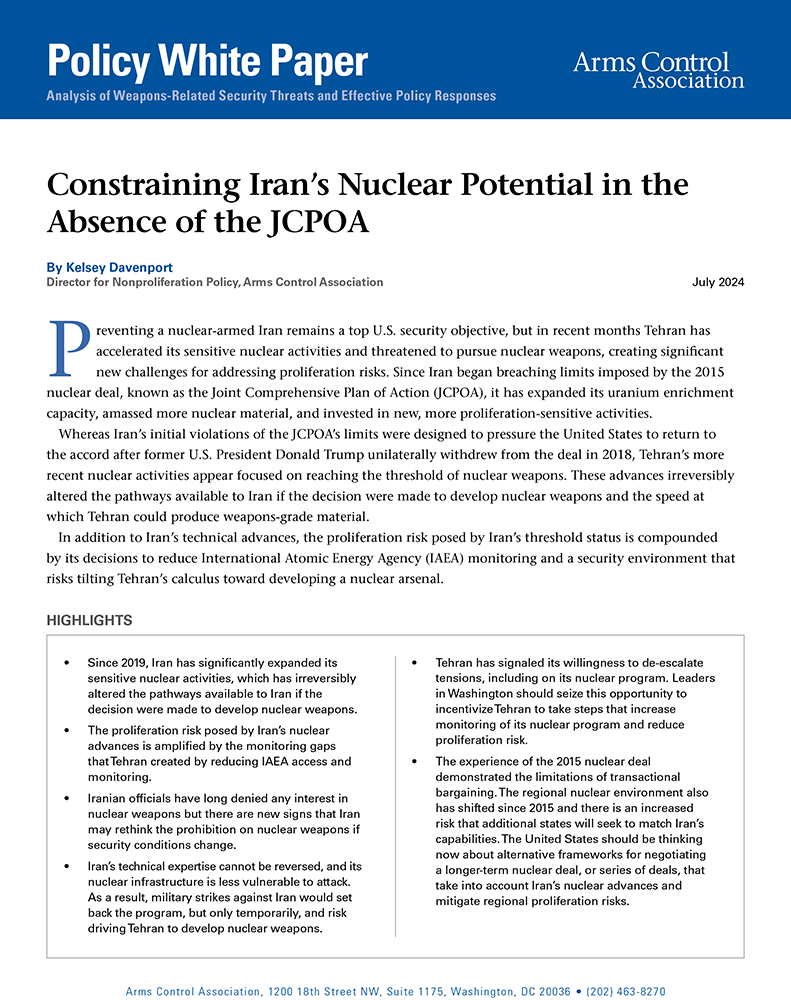July 16, 2024
By Kelsey Davenport
Director for Nonproliferation Policy, Arms Control Association
 |
| Download PDF |
HIGHLIGHTS
- Since 2019, Iran has significantly expanded its sensitive nuclear activities, which has irreversibly altered the pathways available to Iran if the decision were made to develop nuclear weapons.
- The proliferation risk posed by Iran’s nuclear advances is amplified by the monitoring gaps that Tehran created by reducing IAEA access and monitoring.
- Iranian officials have long denied any interest in nuclear weapons but there are new signs that Iran may rethink the prohibition on nuclear weapons if security conditions change.
- Iran’s technical expertise cannot be reversed, and its nuclear infrastructure is less vulnerable to attack. As a result, military strikes against Iran would set back the program, but only temporarily, and risk driving Tehran to develop nuclear weapons.
- Tehran has signaled its willingness to de-escalate tensions, including on its nuclear program. Leaders in Washington should seize this opportunity to incentivize Tehran to take steps that increase monitoring of its nuclear program and reduce proliferation risk.
- The experience of the 2015 nuclear deal demonstrated the limitations of transactional bargaining. The regional nuclear environment also has shifted since 2015 and there is an increased risk that additional states will seek to match Iran’s capabilities. The United States should be thinking now about alternative frameworks for negotiating a longer-term nuclear deal, or series of deals, that take into account Iran’s nuclear advances and mitigate regional proliferation risks.
